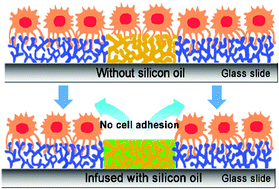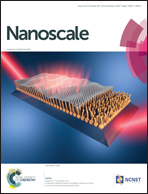Cell micropatterns based on silicone-oil-modified slippery surfaces†
Abstract
We demonstrate a simple and environment-friendly strategy to fabricate cell micropatterns on a nanodendritic superhydrophilic silica substrate separated by silicone-oil-modified superhydrophobic barriers. The superhydrophilic spots exhibit excellent cell adhesion capability due to the enhanced local topographic interaction between cell filopodia and the nanodendritic substrate interface, and result in sensational cell micropatterns. In contrast, the anti-adhesion of silicone-oil-modified superhydrophobic barriers prevents cell migration and results in long-term cell-repellency. Such superhydrophilic spots and silicone-oil-modified superhydrophobic barriers are very helpful for the formation of cell micropatterns. Moreover, co-culture of different cells can be achieved on the silicone-oil-modified micropatterns. The unique properties of our silicone-oil-modified micropatterns hold considerable promise for a wide range of biological applications, such as cell-based bioassays, tissue engineering, high-throughput screening and fundamental studies of cell biology.


 Please wait while we load your content...
Please wait while we load your content...